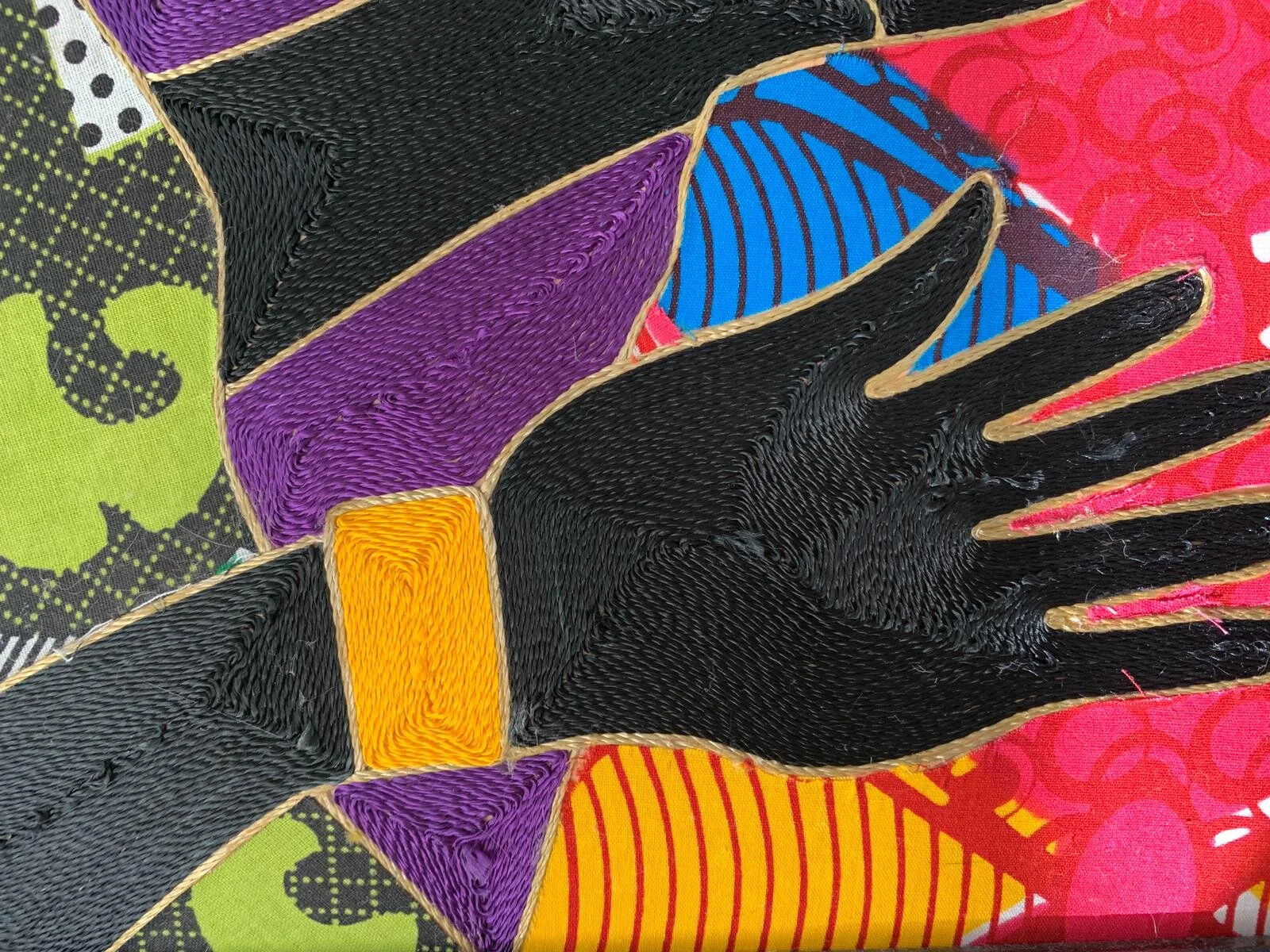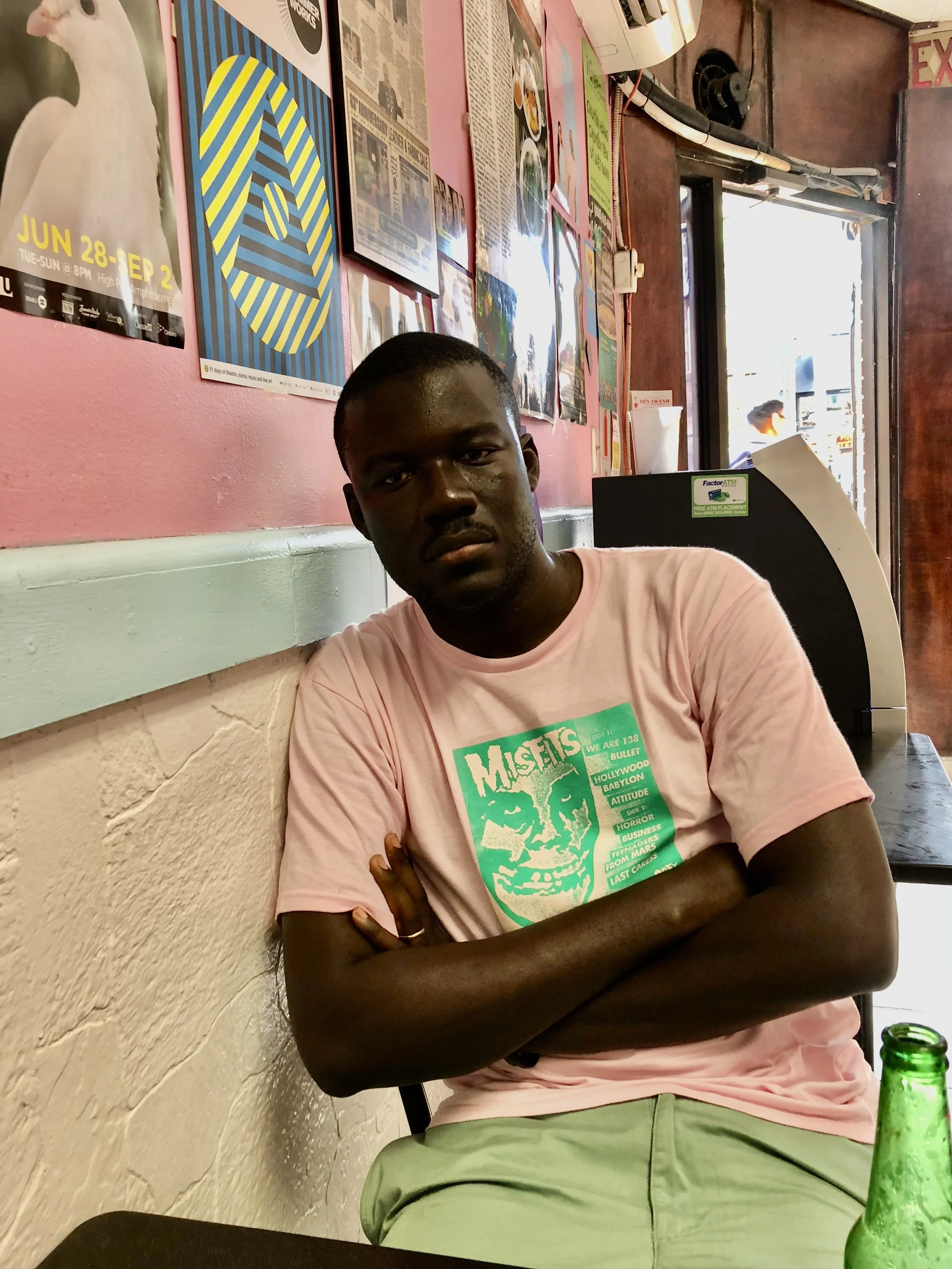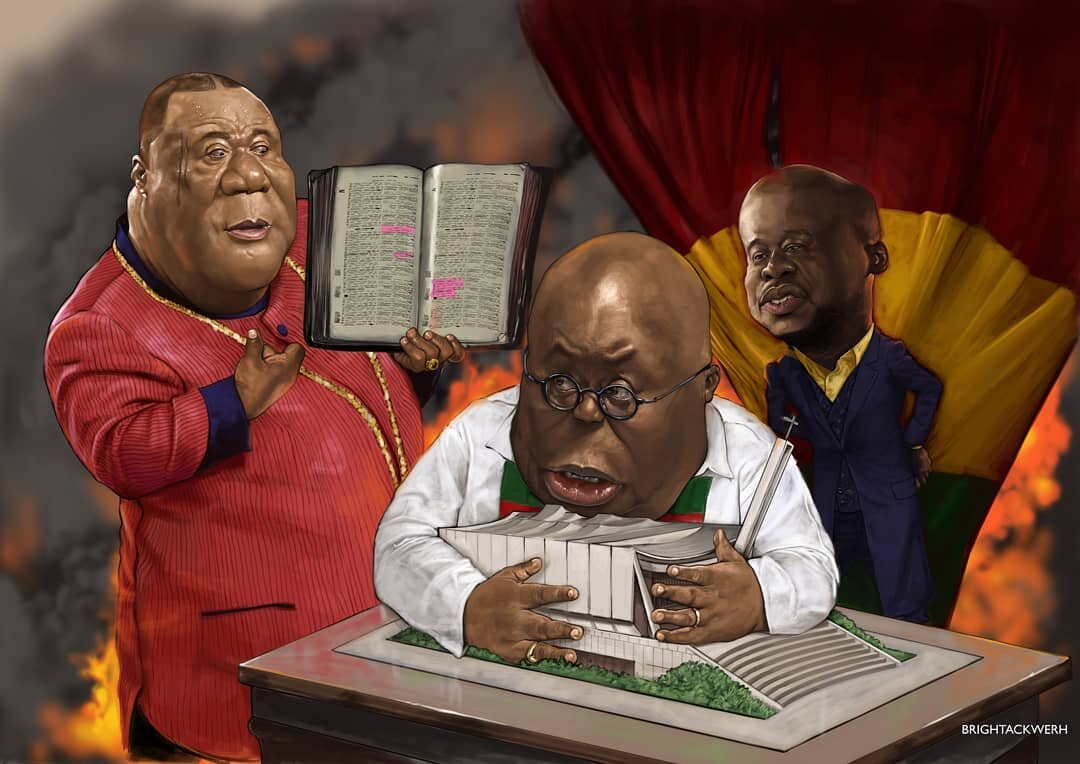Not long after Nana Akufo-Addo’s Presidential victory in December 2016, a sod cutting ceremony was conducted to inaugurate Ghana’s “National Cathedral.” Held on March 6, 2017, this event was part of the larger celebration of Ghana’s 60th anniversary of independence and was followed, a year later, by the public unveiling of the project plan. Designed by celebrated British-Ghanaian architect, David Adjaye, these plans revealed a series of chapels, a baptistery, a 5,000-seat auditorium, a music school, an art gallery, a commercial shop, and a Bible Museum. According to Adjaye, the Akan-inspired design is “a genuine reflection of the art and culture of the good people of Ghana”. President Nana Akufo-Addo has revealed that the building of the Cathedral is the fulfillment of a promise he made to (the Christian) God and, that, instead of drawing on the public coffers, he will be raising the funds himself in Ghana and overseas.
Nana Akufo-Addo has made a personal donation of GH¢100,000 toward the construction of the Cathedral (costed at $100m) and has called it “a priority among priorities”. He said that just as Cathedrals could be built elsewhere in the world, so too did Ghana see it as an important national need. However, was it as simple as that? The President’s personal project has also involved the efforts of state personnel and been granted prime public land to build on. In order to start construction of the Cathedral, for example, the country’s Passport Office and houses occupied by 14 court of appeal judges were demolished and relocated to create a 70,000 sq. m plot for the Cathedral to be erected next to the Ghanaian parliament building in the centre of the capital, Accra. So, in Ghanaian fashion, I’m asking: “Chale, what’s up with that Cathedral?”
The questions I want to ask here are: Why does a secular country like Ghana desire to construct a National Cathedral, what are some of its transnational dimensions, and how has this project been criticized from within the Ghanaian public sphere? One good place to begin to understand the motivations behind the Cathedral project is with the role of evangelical Christianity in the imagination of a Ghanaian Republic.
It comes as no surprise that Ghana’s Christian clergy (Methodist, Catholic, Pentecostal, Prophetic) has oversight responsibility for the construction of the “National” Cathedral project. But, as others have pointed out, the image that Ghana has historically maintained - as a religiously plural country - is also changing. I would argue that Ghana’s “Fourth Republic” (since 1992) – like Nigeria’s – can be described as a “Pentecostal Republic” (Obadare 2019). Since the 1990’s, Ghanaian Pentecostals have influenced mainline Christianity, the public sphere and national politics, and they continue to see Ghana as a “Christian nation.” In speeches following his 2016 Presidential victory, Nana Akufo-Addo admitted that his election campaign was largely fought against unseen “powers and principalities” and, despite the spiritual battles against his campaign, that “the battle is the Lord’s”. In a Pentecostal Republic, the apparent contradiction of a secular country building a Cathedral as a symbol of national unity magically turns into a non-contradiction when interpreted through a Biblical history and when Ghana’s Christian majority becomes the measure of value for nation-building and a national identity.
On the surface, public criticisms of the National Cathedral seem few and far between. Many seem to agree with Nana Akufo-Addo that the Cathedral that is being built would be a celebration of “national unity and social cohesion.” In a country where roughly 70% of Ghanaians self-identify as “Christian,” the building of an interdenominational Cathedral is lauded as an important event of biblical proportions. Yet, if one scratches below the surface, and ventures onto social media and within Ghana’s artistic scene, one will find several strands of critique. Ghanaians have responded on Facebook, Twitter, and online media, to question their President’s “priorities” and his determination to build this Cathedral at a time when other basic services are waning and when infrastructural needs are wanting. The erection of this Cathedral has been interpreted as motivated by elite Christian ambitions, carried out at the cost of the poor and disadvantaged, and disrespectful of religious diversity in Ghana. The Coalition of Muslim Organisations, Ghana (COMOG), for example, chastised the government over the project saying it constitutes an “interference in religious” matters in a secular state like Ghana:
“Just as the Government of Ghana has not been involved in the construction of religious edifices for Muslims, Traditionalists, Hindus etc, it should not be involved in the efforts by Christians to build themselves a cathedral.” (COMOG)
Yet, Akufo-Addo’s Presidency has also reconstituted the National Hajj Committee to help fund the pilgrimage to Saudi Arabia undertaken by Ghanaian Muslims. And, for the first time in Ghana’s history (in March 2019), the ceremony to mark the country’s Independence Day took place outside of Accra and in the Muslim-majority city of Tamale. It is therefore not surprising that part of the argument in favour of the Cathedral goes: Ghana supports its Muslim community, so why not support the Christian community too? As far as I am aware, it was only the Convention People’s Party that took legal action against the State and questioned its excessive entanglement in Religion. The political party questioned the kind of “secularity” that the Ghanaian Constitution guarantees in the face of the State's involvement in Hajj activities and the building of a National Cathedral, and tried to halt the construction of the Cathedral. Perhaps the more relevant observation is the taken for granted assumption that building this Cathedral is about national unity and future prosperity for all Ghanaians. Before we get to the critique of the Cathedral, let us start with the motivations for its construction and the project’s associations with the controversial Museum of the Bible in Washington D.C.
Museum of the Bible, Washington D.C. (Accra – Coming Soon!)
On February 8, 2019, Nana Akufo-Addo visited the “Museum of the Bible” (MOB) in Washington D.C., where he hosted a banquet to get the financial support of the Ghanaian Christian diaspora. Sitting next to Nana Akufo-Addo at the ceremony was Mr. Steven Green, the CEO of Hobby Lobby and Chairman of the MOB, someone who has spent hundreds of millions of dollars to make America a “Bible nation”. At the event, Mr. Green “gave a rendition of how his rich experience and knowledge were solicited during the initial planning of the building of the Cathedral and couldn’t be more grateful”. The promotion of a conservative evangelical understanding of the Bible seems to be the aim of the MOB, even as it claims to be “non-sectarian” (Moss and Baden 2017). The MOB contains the world’s largest private collection of biblical antiquities, consisting of more than 40,000 pieces. Ghana’s Bible Museum will somehow be associated with the Washington example and this raises other questions: such as where Ghana’s Bible Museum artifacts will come from (on the recent scandals of illegal trading of Biblical texts by the American MOB, see Blouin and Mairs; Mazza; Nongbri), and how the Bible Museum in Accra will serve as an educational institution that attempts to create historical continuity between Biblical History and national history (Bielo 2018). Biblical historical museums such as the MOB (and potentially Ghana’s Bible Museum) “promise to make the Bible ‘come alive,’ to transport visitors ‘back in time,’” and “are affiliated with Protestant denominations or organizations that reproduce a pervasive textual ideology: as ‘God’s Word,” the Bible has been divinely preserved, protected, and promoted throughout time” (Bielo 2018: 44).
In his speech, Nana Akufo-Addo revealed three reasons motivating his decision to build the Cathedral: (1) Post-colonial Ghana had “been spared civil war, famine and epidemics” and he believed this to be because of the “grace of God” who has “preserved and sustained” the nation and to whom he wanted to show thanksgiving; (2) the Cathedral will become a rallying point for the Ghanaian Christian community and promote “national unity and social cohesion”; (3) he made a pledge to “Almighty God” that if he won the elections he would build a Cathedral “to His glory”. Accompanying the President on stage at the MOB fundraiser was Archbishop Duncan-Williams, who is Chairman of the Cathedral’s fundraising committee and a member of the Board of Trustees. Drawing attention to Genesis 22, he asked those attending to give generously in order to receive the blessings of the God of Abraham. Archbishop Duncan-Williams, who is commonly known as the father of Charismatic Christianity in Ghana, also likened the Cathedral to the building of Solomon’s temple from the Old Testament. In an interview with Paul Adom-Otchere on “Good Evening Ghana” he said:
“When Solomon built the temple in Israel, the nation prospered, it rested from war and bloodshed for over four hundred years… So, it has a lot of spiritual significance and prophetic benefit for us as a nation.”
Duncan-Williams, who has personal relationships with political leaders in Africa (past and present) went on to say that “dealing with presidents or politicians is part of my calling.” As he stated in the interview:
“Jesus categorically gave us the command to disciple nations and to win souls… so when it comes to governance, leadership, giving direction, its supposed to come from the church… we should rule in corporate, politics, the marketplace, everywhere.”
The exclusive “we” in these statements is not the inclusive national “us.” Instead, it speaks to the construction of a Pentecostal Christian nation that is rooted in an alignment between Ghana and Christianity, and promotes the idea of a historical continuity between a Biblical past and a national present. Such questions around Christian nationalism in Africa and around the world are also explored in “The Christian Nation Project.”
Reimagining Ghana’s History
A question still remains: How will a National Cathedral (similarly to other Creation Museums in the U.S.A.) serve to “convert non-Christians to Christianity… noncreationists to creationism, and… advance fundamentalism’s legitimacy in the public sphere” (Bielo 2018: 4)? More than just the land that is being appropriated, and the issue of how funds are being acquired, this project poses the question of how national “history-making” provides a sense of direct access to the past through the Bible.
Reimagining Ghana’s history through the building of the Cathedral and the Bible Museum can be interpreted as an attempt to bridge the cultural and temporal separation between the Biblical past and Ghana’s national present – the projection of a continuity of faith into the nation’s past. Material sites such as the Cathedral and the Bible Museum collapse the temporal distance and conjure direct access to the Biblical past in the present. Yet, these attempts to Christianize Ghana’s past and present have not gone unnoticed. But this shall be the subject of my next post.















